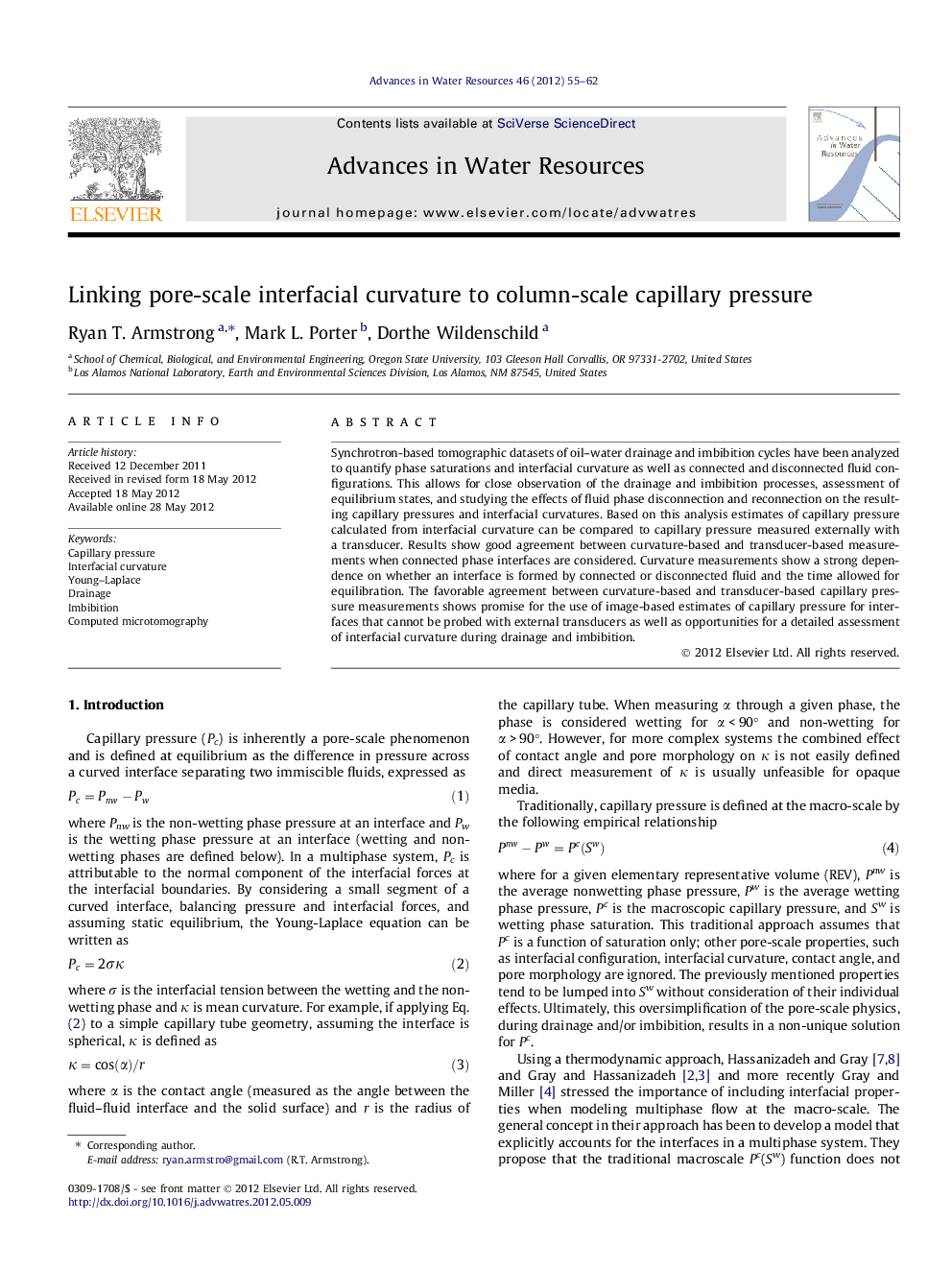| Article ID | Journal | Published Year | Pages | File Type |
|---|---|---|---|---|
| 4525836 | Advances in Water Resources | 2012 | 8 Pages |
Synchrotron-based tomographic datasets of oil–water drainage and imbibition cycles have been analyzed to quantify phase saturations and interfacial curvature as well as connected and disconnected fluid configurations. This allows for close observation of the drainage and imbibition processes, assessment of equilibrium states, and studying the effects of fluid phase disconnection and reconnection on the resulting capillary pressures and interfacial curvatures. Based on this analysis estimates of capillary pressure calculated from interfacial curvature can be compared to capillary pressure measured externally with a transducer. Results show good agreement between curvature-based and transducer-based measurements when connected phase interfaces are considered. Curvature measurements show a strong dependence on whether an interface is formed by connected or disconnected fluid and the time allowed for equilibration. The favorable agreement between curvature-based and transducer-based capillary pressure measurements shows promise for the use of image-based estimates of capillary pressure for interfaces that cannot be probed with external transducers as well as opportunities for a detailed assessment of interfacial curvature during drainage and imbibition.
► Computed tomography datasets were analyzed for interfacial curvature. ► Curvature and transducer-based measurements compare well. ► Disconnected and connected phase interfaces have significantly different curvatures. ► Connected phase interfacial curvature relaxes as the system equilibrates.
